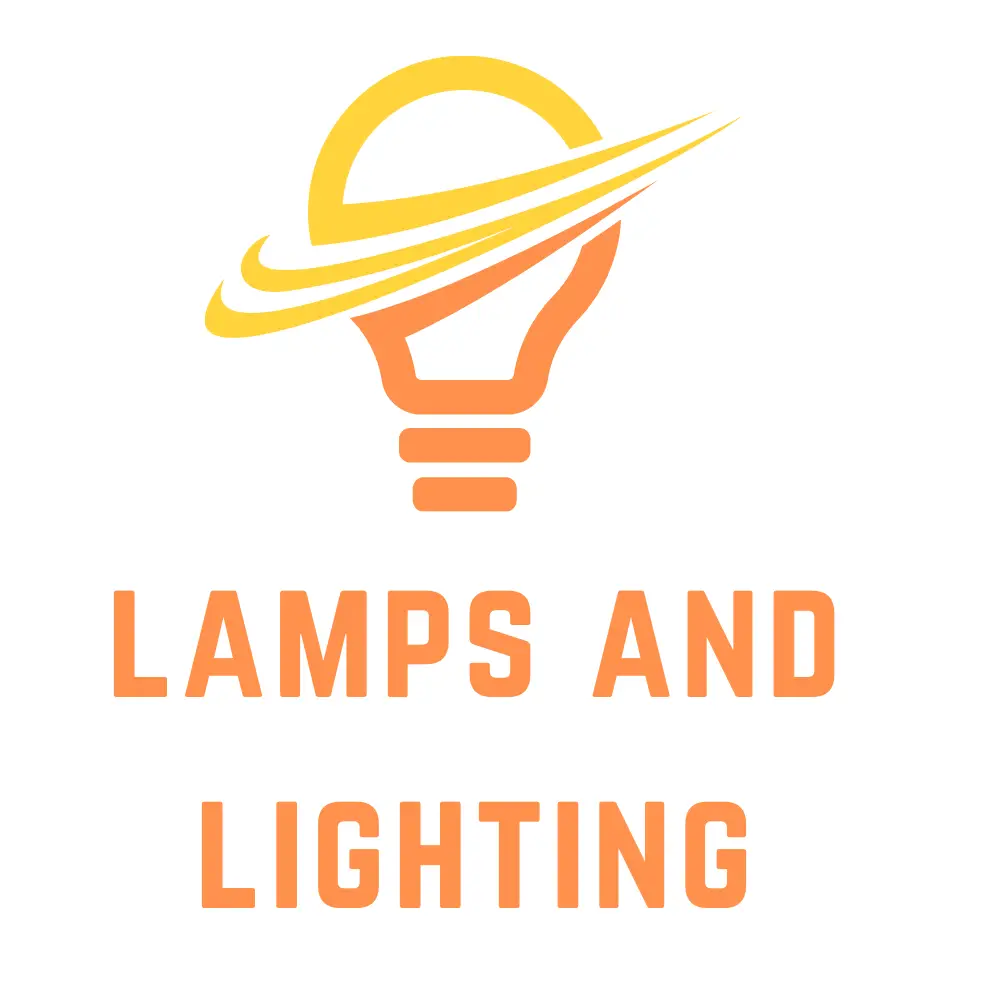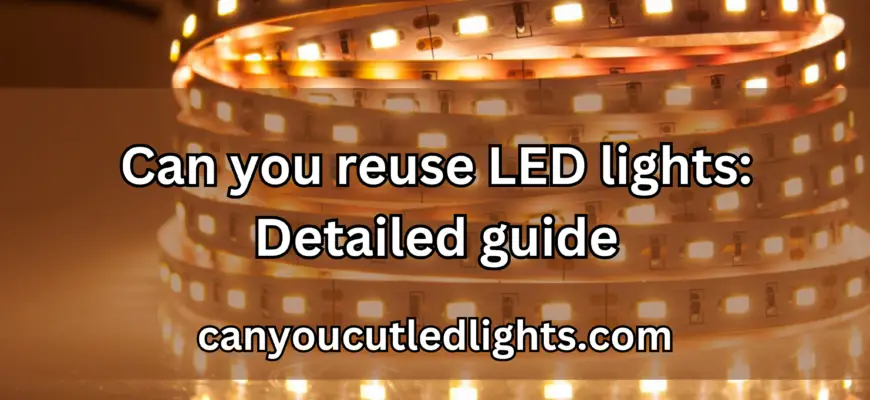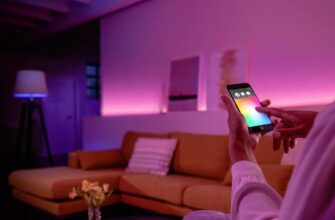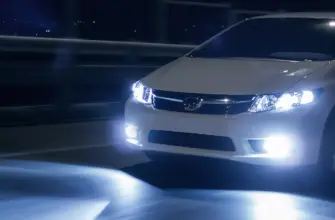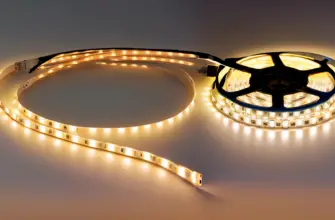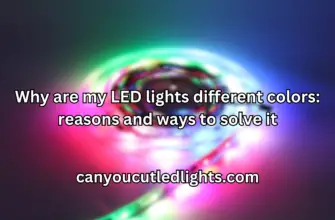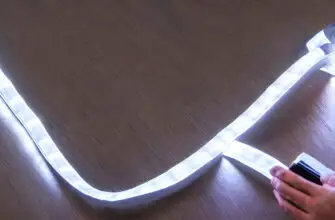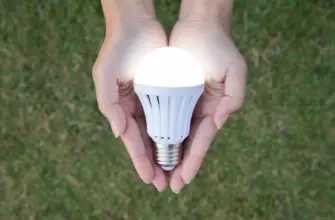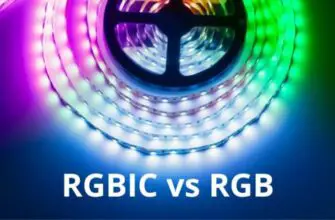LED strip lights have become increasingly popular due to their versatility and energy efficiency. These flexible light strips offer vibrant illumination and can be easily customized to fit any space, for example for outdoor lighting.
But what happens when you want to remove LED strip lights or reuse them? Can you safely peel them off and reapply them without damaging the walls or the lights themselves?
In this article, we will explore the process of reusing an LED light strip, including removing them from the wall, precautions to take, resticking them effectively, and even soldering them together for extended use.
So, let’s clarify can you reuse LED lights or not?
Understanding LED light strips

LED light strips, also known as LED tape lights or ribbon lights, consist of a flexible circuit board with tiny light-emitting diodes (LEDs) evenly spaced along its length.
These strips often come with an adhesive backing, making them easy to stick to various surfaces, such as walls, cabinets, or furniture.
LED light strips are available in different lengths, colors, and brightness levels, offering a wide range of creative lighting possibilities like Minger LED strip lights.
Is it possible to reuse LED strip lights?
LED lights are not only energy-efficient but also highly durable, which makes them ideal for reuse. LED strips offer the advantage of flexibility, allowing users to repurpose them for different applications and environments.
By carefully removing LED strips and preserving the adhesive lining, it is possible to restick or reapply them on new surfaces.
This is particularly useful when you want to relocate the lights, change the layout, or modify the lighting setup.
Additionally, if the backing loses its stickiness or is damaged during removal, alternative methods such as using double-sided tape or adhesive strips can be employed to facilitate the reuse of LED strips. This versatility not only saves money but also reduces electronic waste.
With proper handling and maintenance, LED lights, including strip lights, can be reused multiple times, providing efficient and long-lasting illumination for various light fixtures and environments.
By embracing the concept of reusability, LED lights contribute to a sustainable and eco-friendly approach to lighting solutions.
Tools to remove LED strip lights safely
When it comes to the removal of LED light strips, it is of utmost importance to exercise caution in order to prevent any harm to the wall. There are various tools and materials that can be employed to remove LED light strips without causing any damage.
To begin, delicately peel off the strips by hand, exerting gentle pressure and pulling slowly. If the adhesive is particularly strong or sticky, employing a dryer on a medium or low heat setting can be beneficial. The heat will warm up the adhesive, facilitating easier removal of the strip.
Furthermore, a plain object such as a plastic card or putty knife can be utilized to gently scrape away any remaining adhesive residue, ensuring minimal damage. Another approach involves using a cutting board or connector piece to detach the LED strip lights from the wall without causing any harm.
Selecting the appropriate tools and materials is crucial in order to mitigate the risk of wall damage and achieve a smooth removal process. By employing these techniques, it is possible to safely remove LED light strips without leaving any unsightly marks or compromising the integrity of the wall surface.
Removing LED light strips

Removing LED light strips from the wall requires caution to avoid damaging the surface or leaving a sticky residue behind a LED strip light.
The adhesive lining can adhere tightly, especially when applied to painted walls. If not removed properly, you risk peeling off paint or creating an unsightly mess.
Here we have some instructions for you to remove the LED strip lights from the wall:
Turn off the power
Before starting to remove LED strip lights, ensure the LED lights are disconnected from the power source. This precaution is essential to avoid electric shock and ensure your safety.
Apply low to medium heat
Gently warm the adhesive strip with a hairdryer or heat gun set to a low to medium heat setting. This heat softens the adhesive, making it easier to peel off without damaging the wall.
Lift one end
Using a flat object, such as a credit card or plastic spatula, lift one end of the LED strip from the wall. Be careful not to apply excessive force, as it may cause the strip to break or damage the surface beneath.
Slowly peel off
Gradually peel LED strip lights, applying steady pressure and ensuring it detaches smoothly. If you encounter resistance, apply additional heat and try again.
Use a blow dryer (optional)
If the adhesive of the LED light strip is particularly strong or sticky, you can use a blow dryer on a medium or low-heat setting to warm up the adhesive.
Hold the blow dryer a few inches away from the strip and apply heat evenly along the length. This can help loosen the adhesive, making it easier to remove the strip.
Remove any residual adhesive
After removing the LED strips, inspect the wall for any residual adhesive or LED strip lights sticky residue. Gently scrape off any remaining adhesive using a flat object such as a plastic card or putty knife.
Be cautious not to damage the wall surface while doing this.
Clean the surface
Once the adhesive is removed, clean the surface using a soft sponge or cloth dampened with a mild soapy solution or rubbing alcohol.
This will help remove any remaining residue or dirt, ensuring a clean surface for resticking or any future use.
Allow the surface to dry
After cleaning, allow the surface to dry completely before attempting to restick the LED light strip. Moisture can interfere with the adhesive’s effectiveness and compromise the strip’s adhesion.
Reusing LED light strips
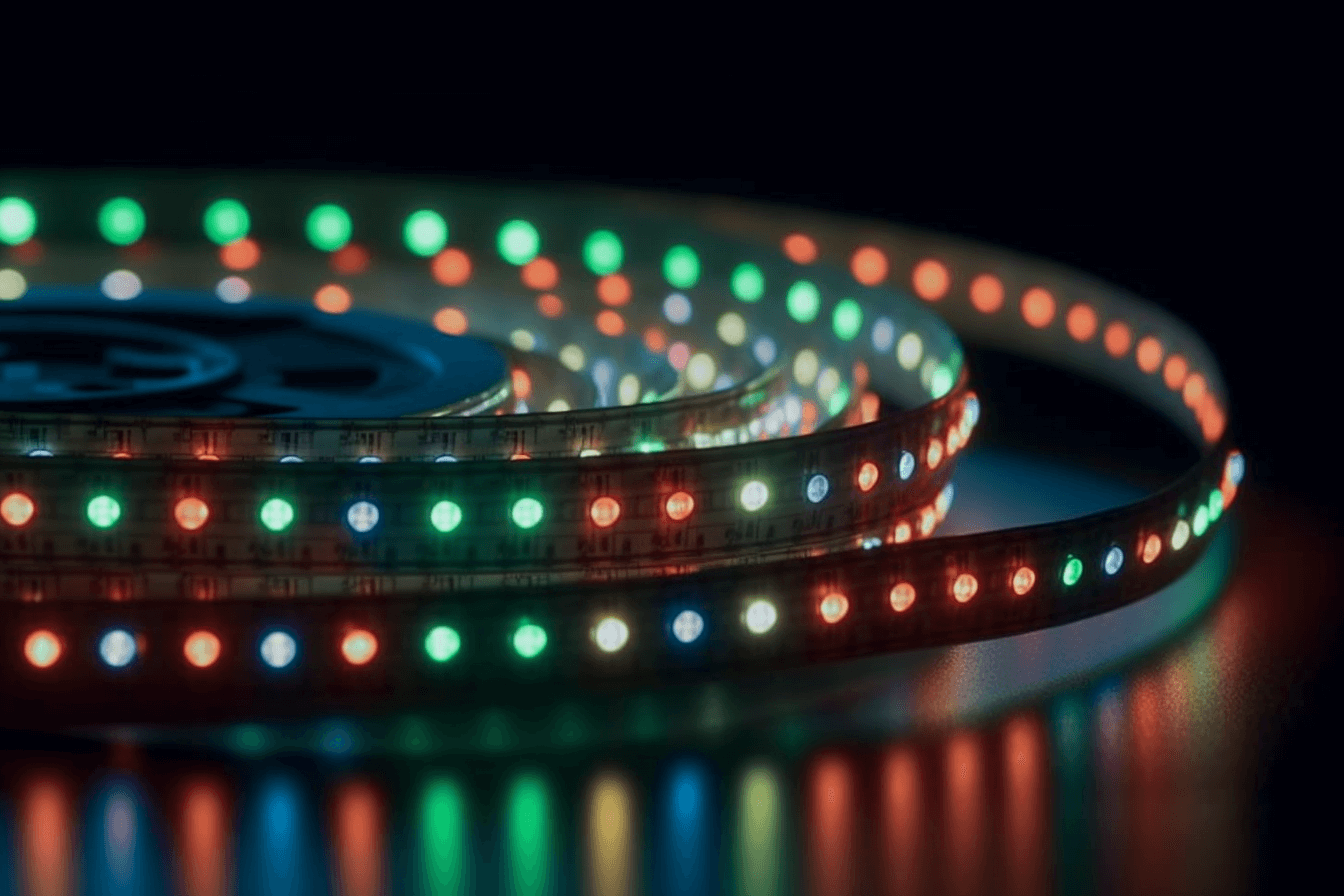
Reusing LED light strips is a cost-effective and eco-friendly way to enjoy their illumination in different spaces.
However, there are a few things to consider, ensuring successful reuse without compromising the functionality or appearance of the lights.
Here are some essential tips to reuse LED light strips:
Handle with care
LED light strips are delicate electronic devices, and mishandling them can lead to damage. Avoid bending or twisting the strip excessively, and handle the connectors and wires gently to prevent any breakage.
Avoid cutting the strip
If possible, try to reuse the entire LED light strip without cutting it. Cutting the strip may require soldering and can be challenging for those without experience in electronics.
Test before reinstallation
Before resticking the LED lights, test them to ensure they are functioning correctly. Connect them to the power source and verify that all the LEDs light up as intended.
Restick LED light strips with adhesive backing
If the adhesive lining of the LED light strip is still intact and sticky, you can reuse it by simply pressing it firmly onto the desired surface.
For painted walls or surfaces where the adhesive is no longer effective, consider using double-sided tape or adhesive strips specifically designed for LED strips.
Soldering LED light strips
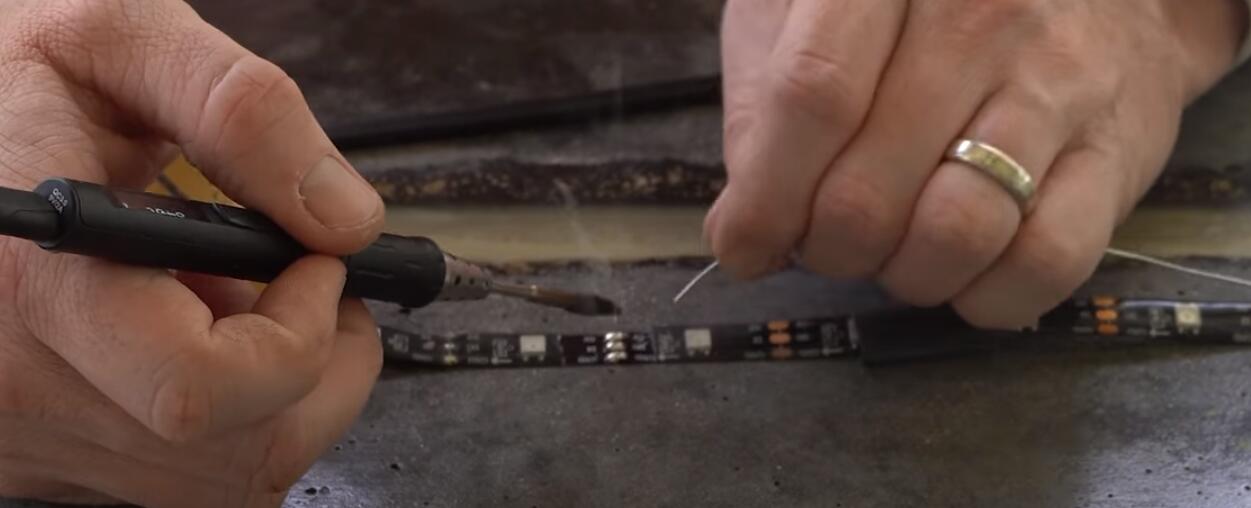
Sometimes, you may need to solder LED light strips together to create longer lengths or repair damaged sections.
Soldering requires a basic understanding of electronics and soldering techniques, so if you’re unfamiliar or uncomfortable with this process, it’s advisable to seek assistance from a professional.
Follow these general guidelines when soldering LED light strips:
Prepare the strips
Trim the LED light strips to the desired length, ensuring the cut is made at the designated cutting point. Use wire strippers to remove the protective coating from the copper pads.
Apply flux
Apply a small amount of flux to the exposed copper pads on both ends of the LED light strips. Flux helps promote better solder flow and ensures a strong connection.
Solder the connections
Heat the soldering iron and apply it to the copper pad while touching the solder wire to the pad. The solder should melt and flow onto the pad, creating a secure connection.
Repeat this process for all the necessary connections.
Protect the soldered area
Once the soldering is complete, slide heat shrink tubing over the soldered area. Heat the tubing with the soldering iron or a heat gun to shrink it and provide insulation and protection to the connections.
Resticking LED lights
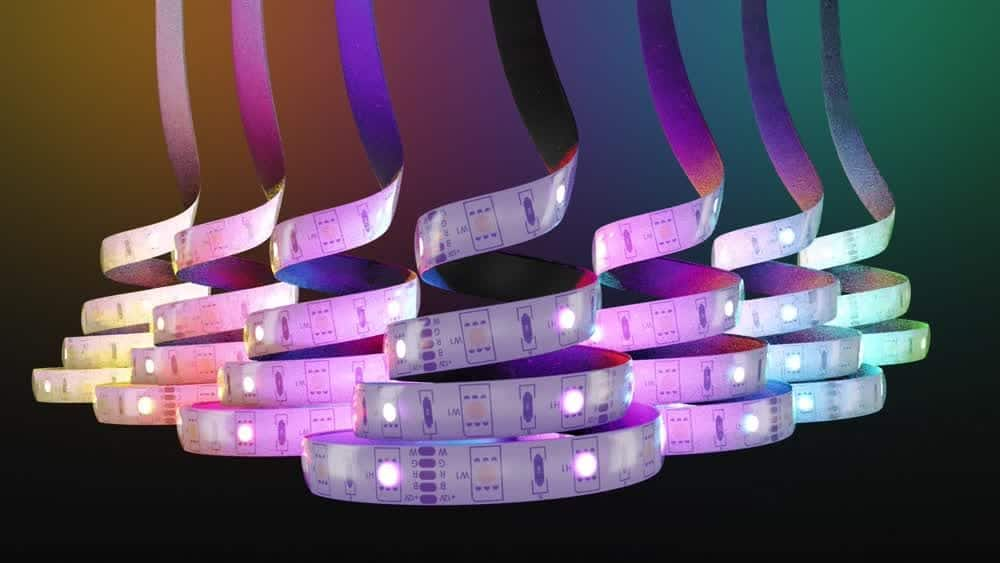
To stick LED strip lights back to the wall effectively, you will need the right tools and techniques.
Whether you want to move the lights to a different location or readjust their position, here is a step-by-step guide to help you restick LED strips securely:
Prepare the surface
Ensure that the surface where you intend to restick LED light strips is clean and free from dust, dirt, or any other debris. This will help improve the adhesive’s effectiveness and ensure a strong bond.
Remove any existing adhesive residue.
If there is any sticky residue left on the LED light strip or the surface, gently peel it off or use a mild adhesive remover to clean the area. Wipe it clean with a soft cloth or sponge.
Assess the adhesive backing
Check the condition of the LED strip light’s adhesive lining. If the adhesive is still sticky and in good condition, you can reuse it.
However, if it has lost its stickiness or has been damaged during removal, consider using alternative methods such as double-sided tape or adhesive strips.
Cut double-sided tape to size
If you opt for tape, cut it into strips that match the length of the LED strip light. Make sure the width of both the strip and tape are the same.
Apply the double-sided tape
Peel off the backing from the tape and carefully align it along the back of the LED strip light. Press firmly to ensure proper adhesion.
Position the LED strip lights
Determine the desired location where you restick LED light strips and carefully press them onto the surface. Start from one end and work your way along the designated path, applying even pressure to ensure full contact between the adhesive and the surface.
Secure the ends
To prevent the LED strips from peeling off at the ends, consider using additional adhesive methods. Hot glue or small adhesive strips can be applied to both ends of the LED lights to provide extra support and stability.
Do not be afraid of using hot glue, since the LED strip lights are durable enough to handle the hot glue.
Apply pressure and allow it to set
Once the LED strip lights are in place, apply firm pressure along the entire length to ensure maximum adhesion.
You can use a flat object or your hands to press the lights onto the surface firmly. Leave the lights undisturbed for a few hours to allow the adhesive to set and create a strong bond.
Test the connection
After the adhesive has been set, connect the LED lights to the power source and test them to ensure they are functioning properly. Check for any loose connections or areas where the lights may not be fully stuck.
By following these steps, you can restick LED strip lights securely, allowing you to enjoy their vibrant illumination in the desired location without the risk of them falling or losing their position.
It’s essential to be cautious when resticking LED strip lights on certain surfaces, such as wall paint or delicate materials.
Test a small, inconspicuous area first to ensure that the adhesive does not damage or leave any marks on the surface.
Conclusion
LED light strips offer an array of creative lighting possibilities, and reusing them can be a practical and economical choice.
By following the proper steps to remove, handle, restick, and even solder LED light strips, you can safely and effectively reuse them without causing damage or compromising their functionality.
Whether you’re looking to change the lighting scheme in your living room, repurpose them in a new space, or extend their length, with the right precautions and techniques, reusing LED strips can be a seamless process.
FAQs
Can you remove and restick LED lights?
Yes, it is generally possible to remove and restick LED lights, particularly LED strip lights. LED strip lights are commonly designed with adhesive backing, allowing them to be easily attached to various surfaces.
To remove LED strip lights, gently peel them off the surface using your fingers or a flat object, being careful not to damage the strip or the surface.
To restick the LED strip lights, you can use the same adhesive lining they came with, or you can use alternative methods such as double-sided tape, adhesive tapes, or command strips to secure them to a new location.
Can you still use LED lights after you cut them?
In most cases, LED strip lights cannot be used after they have been cut. LED strip lights are designed to operate in a series circuit, where each section is connected to the next. Cutting the LED strip disrupts this circuit and can result in the cut section no longer functioning.
Additionally, cutting the strip may also damage the individual LEDs. It is recommended to only cut LED strip lights at designated cut points, if available, where the manufacturer has specifically designed the strip to be cut without causing damage.
Can you cut and reuse LED strips?
Cutting and reusing LED strips can be challenging and may not yield the desired results. As mentioned earlier, cutting an LED strip can interrupt the circuit and render the cut section inoperable. While it may be possible to rewire and reconnect the cut section, it requires knowledge of electrical circuits and soldering skills.
Moreover, even if you manage to reconnect the cut section, there can be issues with the brightness, color consistency, and overall performance of the reused strip. Therefore, it is generally recommended to use LED strips in their original form and avoid cutting them unless necessary.
